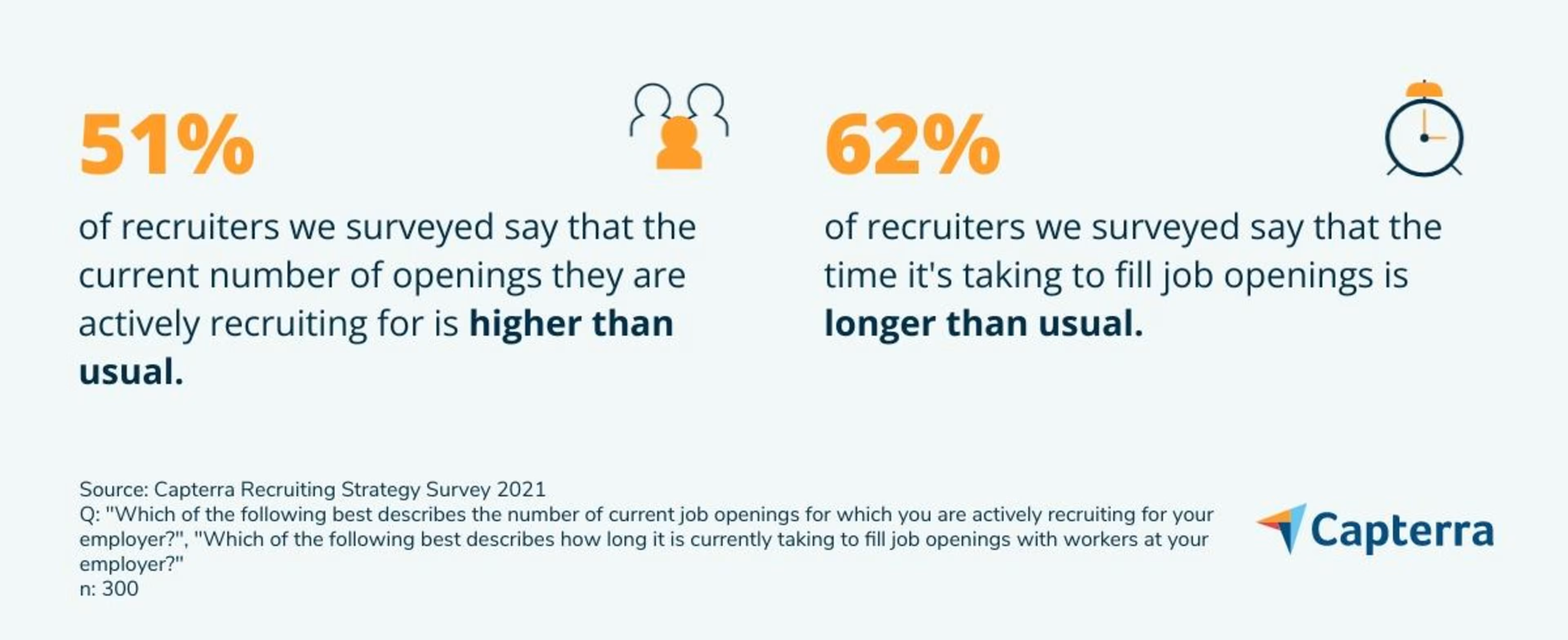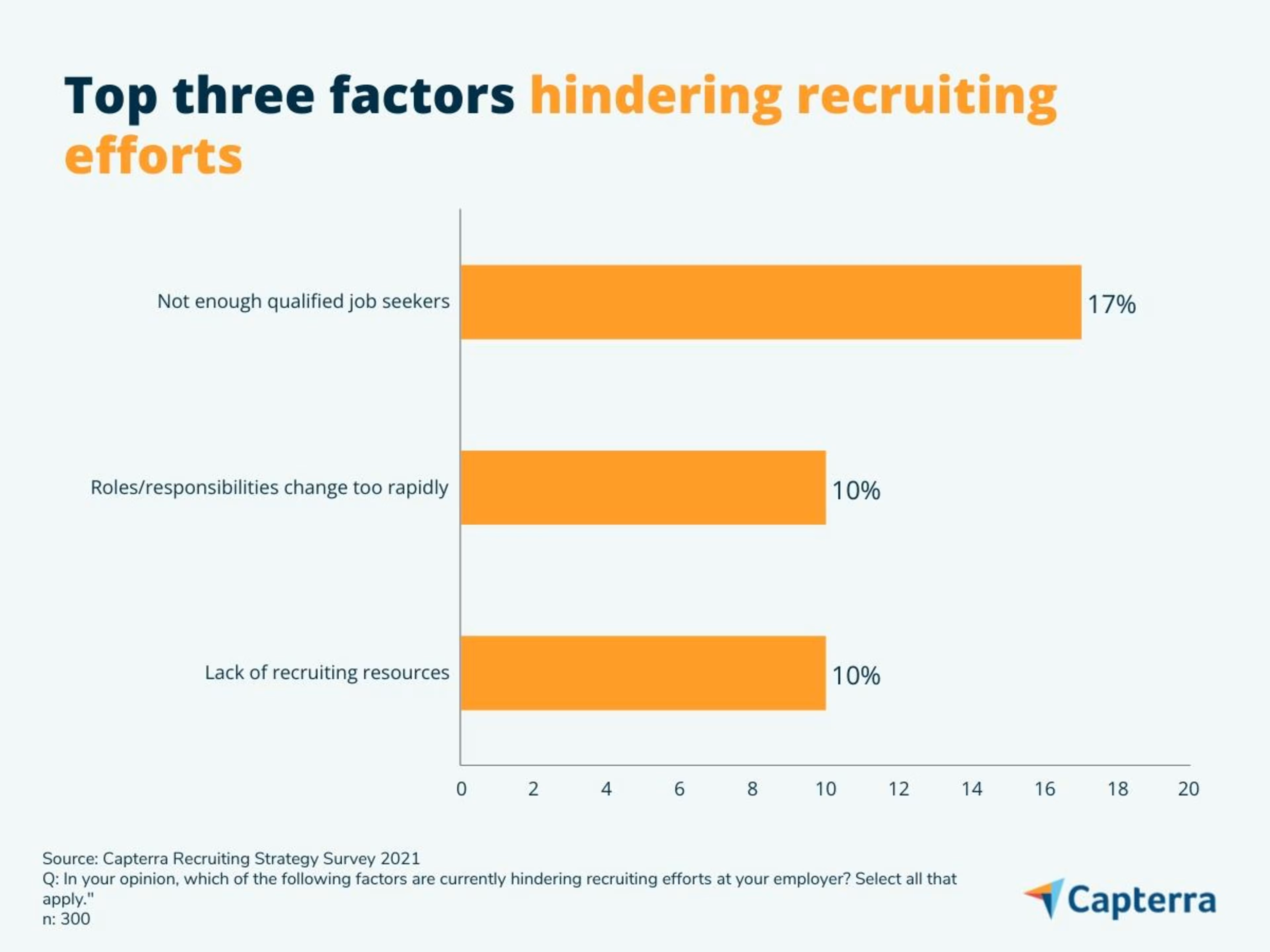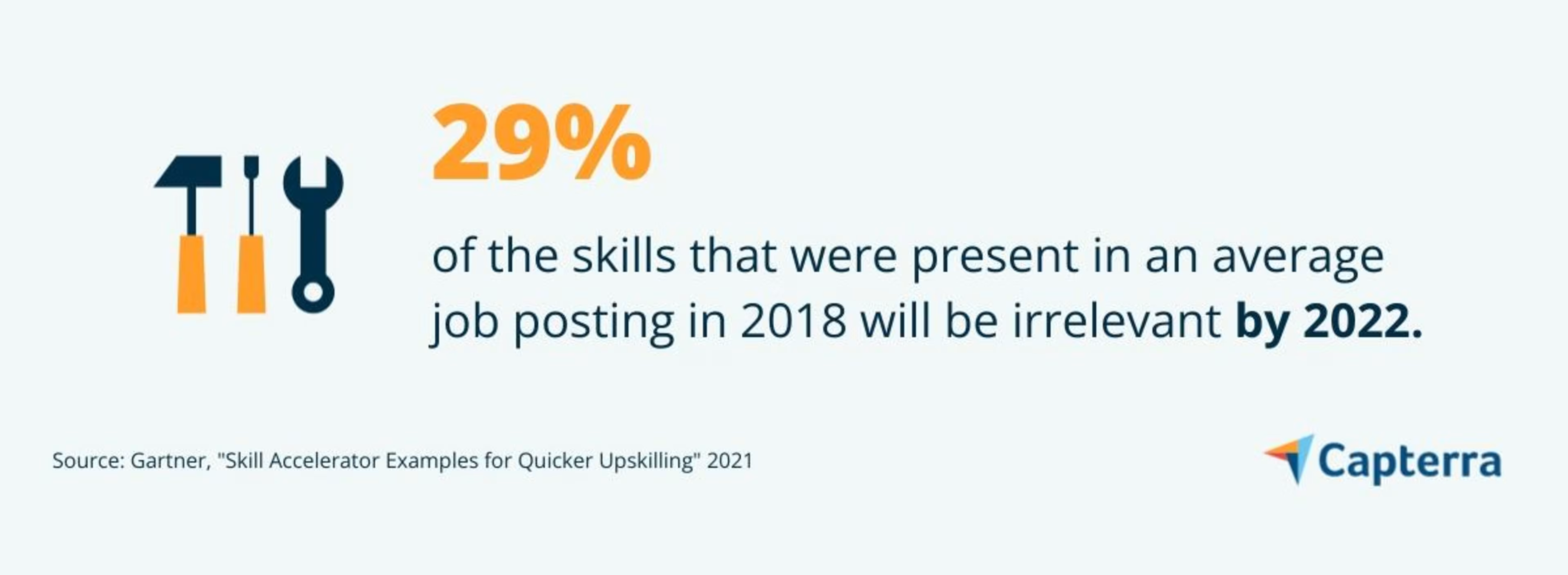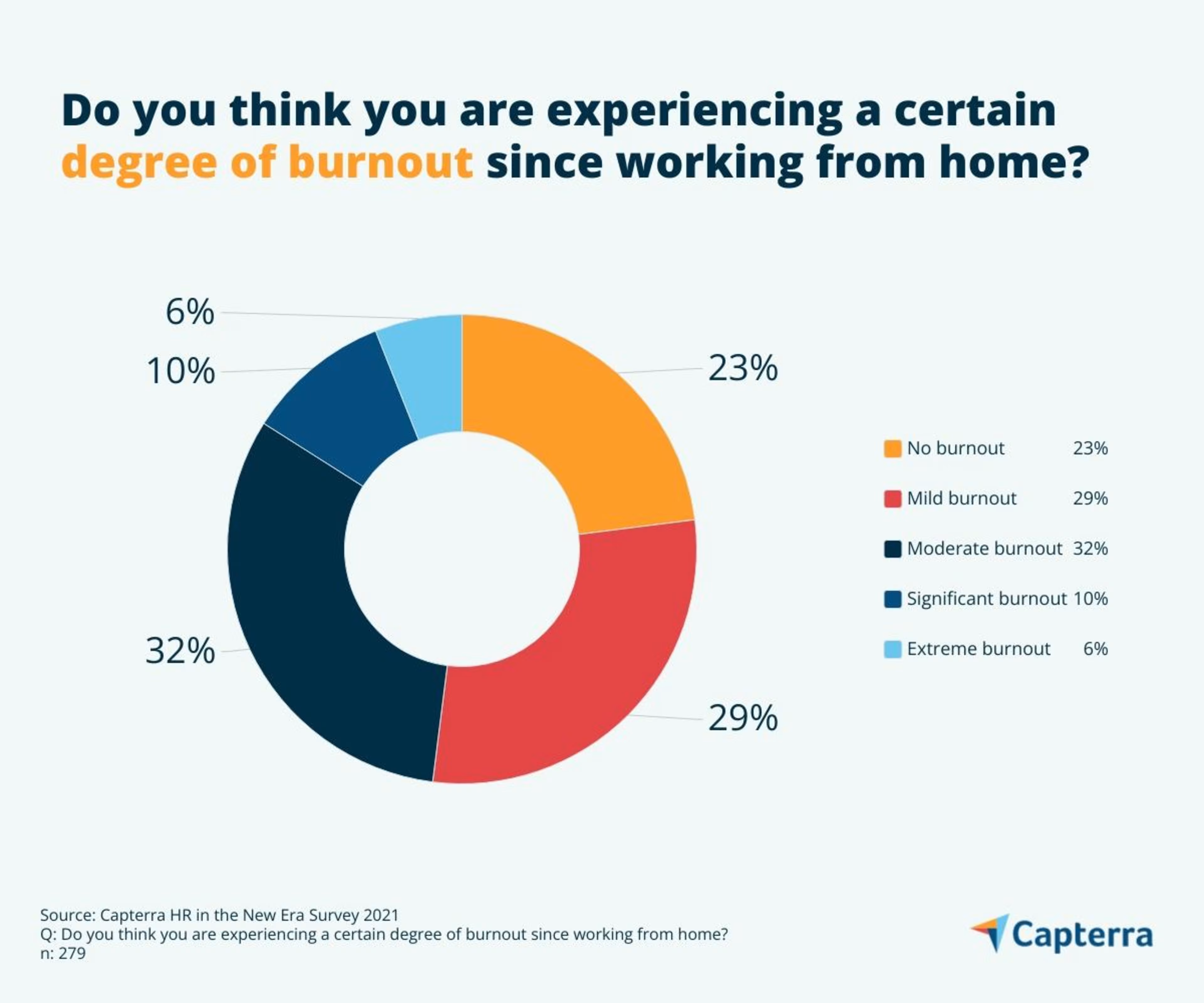From talent shortages to ever-evolving skill needs, there’s a lot for HR leaders to prepare for in the coming year.
As an HR professional, you’ve had a lot to manage over the last few years (yes, we’re talking about the global health crisis). And while we’d love to tell you to kick back and relax because things are slowing down, the truth is that there’s always a new set of challenges for HR professionals around the corner.
The good news is that you can start preparing your HR team for challenges to come right now—and by reading this guide, you’re already getting a head start.
Below, we’ve identified three challenges human resource professionals should prepare for in the new year. Packed with helpful resources, this article was created to give you an overview of those challenges and how you can successfully navigate them.
Challenge #1: Recruiters need help keeping up with rapid turnover
There’s a good chance you’ve heard the last year referred to as “The Great Resignation,” and the “Talent Wars.” These monikers were chosen because of the movement of employees voluntarily leaving their jobs this year. This trend is still ongoing, and in fact, the Bureau of Labor Statistics reported that 4.4 million Americans quit their job this September.
Earlier this year, we surveyed 300 employees with recruiting responsibilities and asked them to rate the difficulty of finding, attracting, and recruiting job seekers on a scale from 1 (not difficult at all) to 7 (extremely difficult). The majority (65%) chose a 5 or above.

Overall, most businesses are experiencing more job openings than usual, and due to a widespread talent shortage, recruiters are struggling to fill those roles in their typical time-to-hire window.

How to support recruiters during a talent shortage:
Start workforce planning. Strategic workforce planning is a process spearheaded by HR professionals to determine current and future staffing needs based on organizational goals. Effective workforce planning can help you avoid getting caught in the crossfire of the war for talent.
Invest in a recruiting platform. According to our survey, a lack of recruiting resources is one of the top three factors hindering recruiting efforts. Our recruiting software directory contains nearly 700 products, including over 100 free tools.
Diversify where you source candidates. If your talent pool seems more shallow than ever, consider switching up where you’re sourcing candidates. Applicant tracking systems (ATS) can help you source qualified candidates from a variety of job board sites.
Ready to hire a recruiting agency for your business needs? Browse our list of companies in the following areas:
Challenge #2: HR leaders need to help employees quickly learn new skills
Today, skill needs evolve quickly. In fact, Gartner reports that the total number of skills required for a single job is increasing at 6.3% annually (full content available to clients).

Recruiting and hiring are where most organizations look first in order to bring in new skills, but considering only 16% of new hires have the skills needed for their current and future roles, another approach is necessary.
In "3 Surefire Predictions for the Future of Talent Management," we predict that by 2025, half of new skills at an organization will be developed internally rather than hired from the outside. However, traditional employee training does not always fill skill gaps fast enough, because by the time the training is built and delivered, skill needs have changed.
This is why HR professionals need to figure out which skills are needed to achieve business success today (and in the future), and how to acquire and apply them in a timely manner. A skills gap analysis will help with the first part of that, and effective training strategies and tools will make the latter possible.
How to skill up, fast:
Conduct a skills gap analysis. A skills gap analysis is a tool for determining the gaps between the skills your employees have today and the skills they need for your organization to accomplish its goals moving forward. Visit our guide, "A Better Way To Do a Skills Gap Analysis," for an overview of this process and advice for how to execute each step.
Use microlearning as a training tool. Microlearning is a low-cost way to provide training to your employees. It’s easier to create microlearning content than it is to create a formal training course, and it’s also faster for employees to complete—which makes it a great option for when you need to impart new knowledge on employees quickly. Check out "3 Successful Microlearning Examples to Learn From" for more information.
Find the right learning platform. A learning management system (LMS) can help you create and administer training content to your employees. Some of these platforms even come with their own library of pre-made courses. If you don’t already have an LMS or other training tool, start your search with "5 Digital Learning Platforms to Help Close Company Skills Gaps."
Challenge #3: Employees are burnt out and disengaged
Employees have been through a lot as of late. We’re not just talking about working through a global health crisis—we’re also talking about the pivot to hybrid and remote work environments, the anti-racism movement, and the steady flow of voluntary turnover that have defined the last two years.
Feeling disengaged under these circumstances is understandable. And even if the above events haven’t affected an employee directly, the ripple effect of their impact can still lead to burnout and change fatigue
Burnout and change fatigue lower engagement, productivity, and even employee retention. For instance, Gartner found that only 15% of fatigued employees report a high intent to stay at their organizations, compared to 34% of non-fatigued employees (full content available to clients).
If you’re wondering how you can prevent external stressors from affecting employee engagement at your organization, you can’t. But you can foster a company culture of empathy, understanding, and flexibility—which is what employees need more than anything right now.
How to support your employees:
Find out how your workforce is feeling. We recommend reading "5 Employee Burnout Signs You're Not Catching." You can also run a survey and ask your employees to share their level of burnout or change fatigue, as well as what they believe would help them feel more engaged.
Involve your employees in change initiatives. In times of disruption, a top-down approach may be the easy answer, but it’s not the most effective one. Check out Gartner’s "How to Reduce the Risk of Employee Change Fatigue" to learn more about how to engage employees through times of change.
Now: Turn challenges into opportunities by tackling them head on
Though it’s never pleasant to think of the challenges that lie ahead, by doing so you are better preparing your HR team to respond to them.
If it’s evident that one or several of these trends are impacting your organization, don’t wait to address them. Start implementing changes today, and you’ll come out ahead of your competitors that don’t.
If you liked this, there’s more to read on our talent management blog. We’re constantly researching and publishing articles that cover the latest HR trends and best practices to help HR leaders just like you.

